NEWS
COMPETITIONS
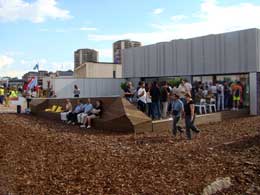
12 July, 2010
Solar Decathlon Europe 2010
Intelligent Solar Buildings , a commitment to research and innovation into sustainable development and renewable energy.
The Solar Decathlon Competition comes to Europe
The (American) Solar Decathlon is a biannual competition organized by the Department of Energy of the United States of America for universities to design and build a self-sufficient house using solar power as the only source of energy.
The SOLAR DECATHLON EUROPE 2010 came about from a commitment by the Government of Spain together with the Government of the United States to organize the competition in Europe.
Both the European Union and Spanish Government are committed to research and innovation into sustainable development and renewable energy, especially in such a sensitive and strategic sector as construction. This initiative is completely aligned with some of the priority objectives of the European Union with regard to promotion and development of sustainability, renewable energy, and their active support in Research and Development on such a global strategic subject.
The Solar Decathlon Europe 2010 Organization has finalized its selection process and has chosen teams from 7 different countries from Europe, America and Asia to participate in the competition.
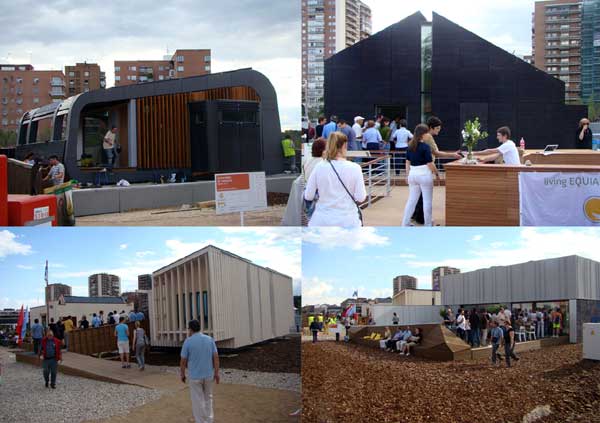
17 self sufficient houses,competed in Madrid from 18th to 28th of June,2010
copyright:Areti Markopoulou
All of the prototype houses designed by the participating universities were assembled in the 'Villa Solar', where they compete and they were exhibited for 10 days.
The 'Villa Solar' was constructed in Madrid in June 2010 with the prototypes designed by the participant Universities coming from France, Germany, Finland, Spain, U.K, and even from, China and USA.
During the 10 days of the competition more than 10,000 people visited 'Villa Solar' and the 17 innovative entries that open a new debate and new possibilities on the sustainability issue.
The entry that finally won the competition was the entry of the Virginia Polytechnic Institute and State University with their Lumenhaus project.
Other entries such as Fab Lab House from IAAC,CEU, as well as Alto University of Finland won prizes such as those of public choice, industrialization, sustainability, architecture and innovation.
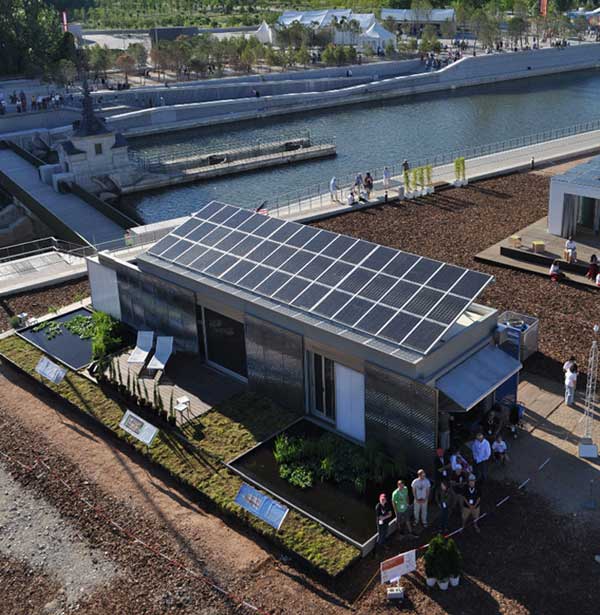
The Lumenhaus project won the first prize of the Solar Decathlon Europe Competition 2010.
copyright:IAAC
Institute for Advanced Architecture of Catalonia (IaaC)/The Fab Lab House Project
The Fab Lab House Project (www.fablabhouse.com) lead by the Institute for Advanced Architecture of Catalonia (www.iaac.net), the Center for Bit and Atoms del MIT and a world wide network of fab labs (fab.cba.mit.edu) have been chosen as one of participants in Solar Decathlon Europe competition (www.sdeurope.org), which took place in Madrid from June 18th to June 28th.
The project won the first prize of public choice as well as a special mention of Sustainability: Beyond Limits. A unique house, which form goes beyond the traditional box full of photovoltaic panels won the impression of both visitors and Media since each day of the competition was generating 3 times more the energy it needed to function.
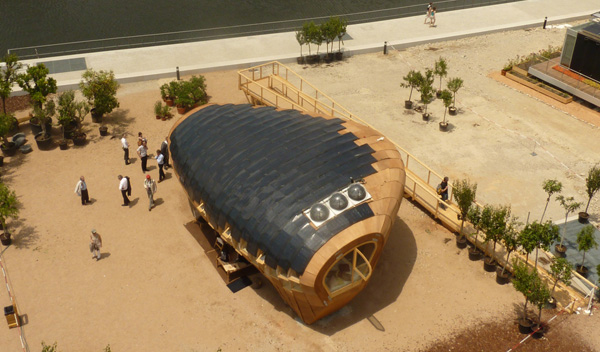
The Fab Lab House Project won the first prize of public choice as well as a special mention of Sustainability
copyright:Areti Markopoulou
The prototype is understood as a result of the negotiated consensus of the sum. More than a closed design, more than a description of an object, the prototype defined here is presented as a combination of a series of intentional strategies, and the realization of a series of affirmations that we intend to defend.
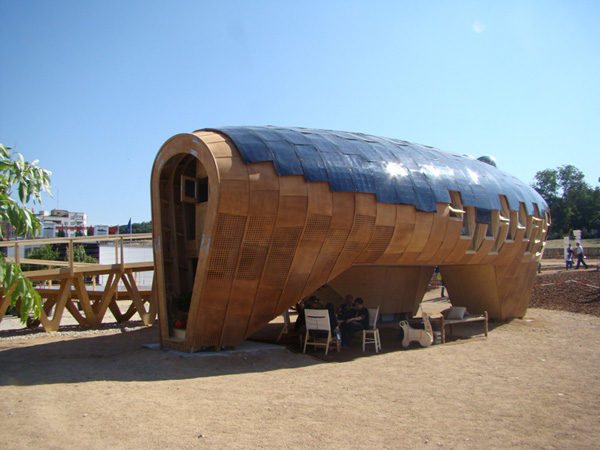
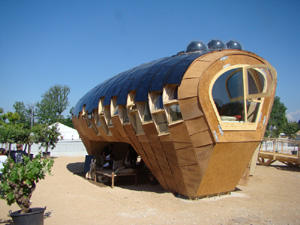
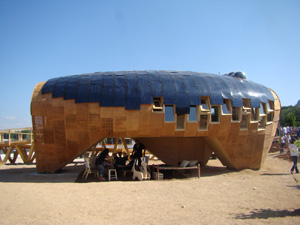
copyright:Areti Markopoulou
Basic conditions of the proposal:
The first argument is based on a distinct industrialization model. Set against the industrialization of mass production, digital design techniques and the new technologies of personalized fabrication, CAD CAM which is closely linked between design and fabrication, offer vast possibilities of adaptation between real needs and specific answers. It is based on this point that IAAC proposes the international network of Fab Labs as a base of production for prototype development.
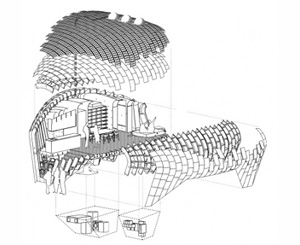
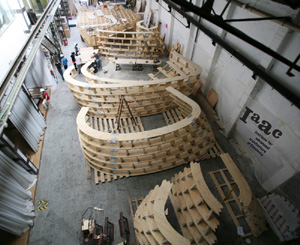
The Fab Lab House project was totally fabricated at the IAAC and FAB LAB BCN infrastructure.
copyright:Areti Markopoulou
The second argument is based on the extended definition of technological efficiency. Fab Lab House project intends to add to the concept of efficiency a factor of accessibility and apply these values to all the design categories of the prototype, from the structure to the finishes. IAAC team proposes to measure, for example, the efficiency of a photo-sensitive material not by its energy efficacy, but by the relation of its price, availability, complexity /technical opacity, possibilities of use, adaptation transformation assembly facility and maintenance... and its energy collecting efficiency. Through this change of viewpoint they intend to make the user an agent of participation and a transformer of the space they inhabit.
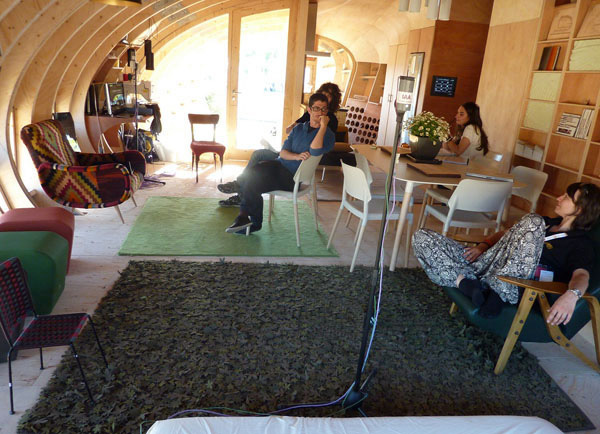
Fab Lab House Interior
copyright:Areti Markopoulou
The third, the emergent logic of the component and distribution of intelligence. Set against the opposing sum of elements originating from different technical fields, set against the typical "box + panel", Fab Lab House argues in favor of the distribution of intelligence. Each component of the prototype contains the same technical, energy, and structural level, etc... as the rest. The logic, in its entirety is found in each of the parts and not in it's entirety.
Finally, the prototype presented here is the result of an open evaluation process of different prototype options, subjected to formal criteria as well as constructive logics and energy efficiency in which all of the agents that have actively participated will form part of their subsequent development.
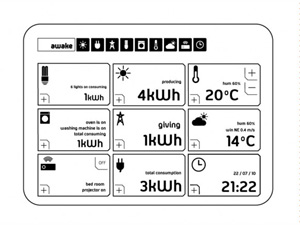
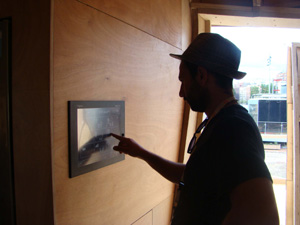
Intelligent control systems allow measuring the amount of energy generated and the amount of energy used in order to allow the house to achieve the less consumption possible.
copyright:IAAC
Form Follows Energy
If in the XX century was suggested that "form follows function", in the XXI century "form follows energy", says Vicente Guallart, director of IAAC and leader of the project. The house is not anymore a machine, rather an organism for inhabiting.
The form of Fab Lab House is based on a parametric model were parameters such as longitude and latitude of the place were the house will be implemented as long as preferable size are inserted in order to generate the most appropriate form that allows the maximum capture of solar energy during the year. The Fab Lab house has this form because it is in Madrid, if it has to be implemented in another site (for instance Ecuador) then the form would be different, the roof would be planner so that it follows the sun movement.
It is about a house that acts like a tree, which produces the energy with its solar "leaves", it send it to its roots in order to store it or share it or send it back to the house to produce the fruit of electricity, says Mr. Vicente Guallart.
The Fab Lab House is considered as a passive environmental structure. It uses the resources of its environment-the sun, the water and the wind-in order to create a microclimate that enhances the quality of the basic living conditions in a passive way.
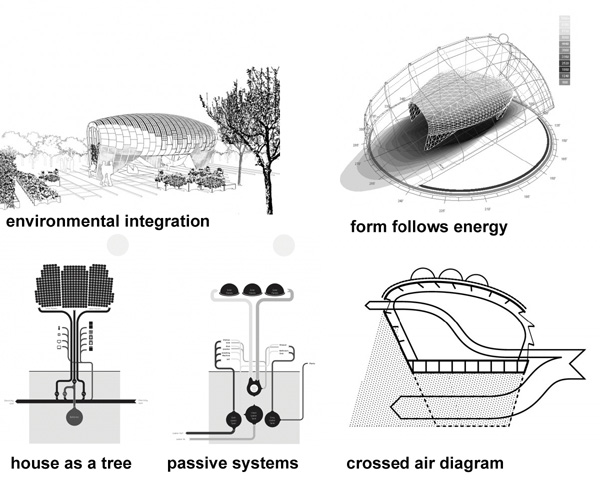
Form Follows Energy diagram,
Passive energy systems as well as advanced technical ones inspired by nature function (trees)
copyright:IAAC










